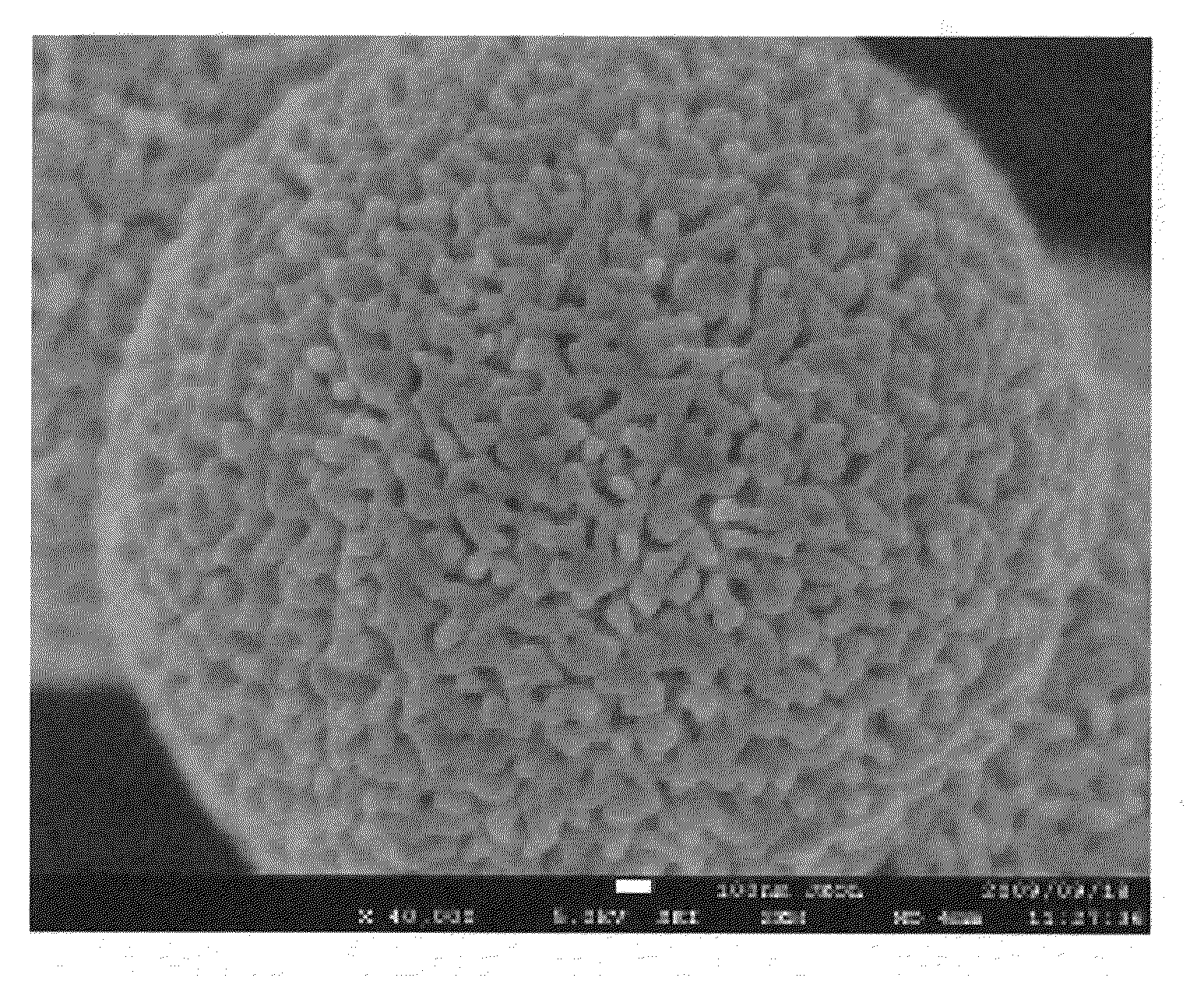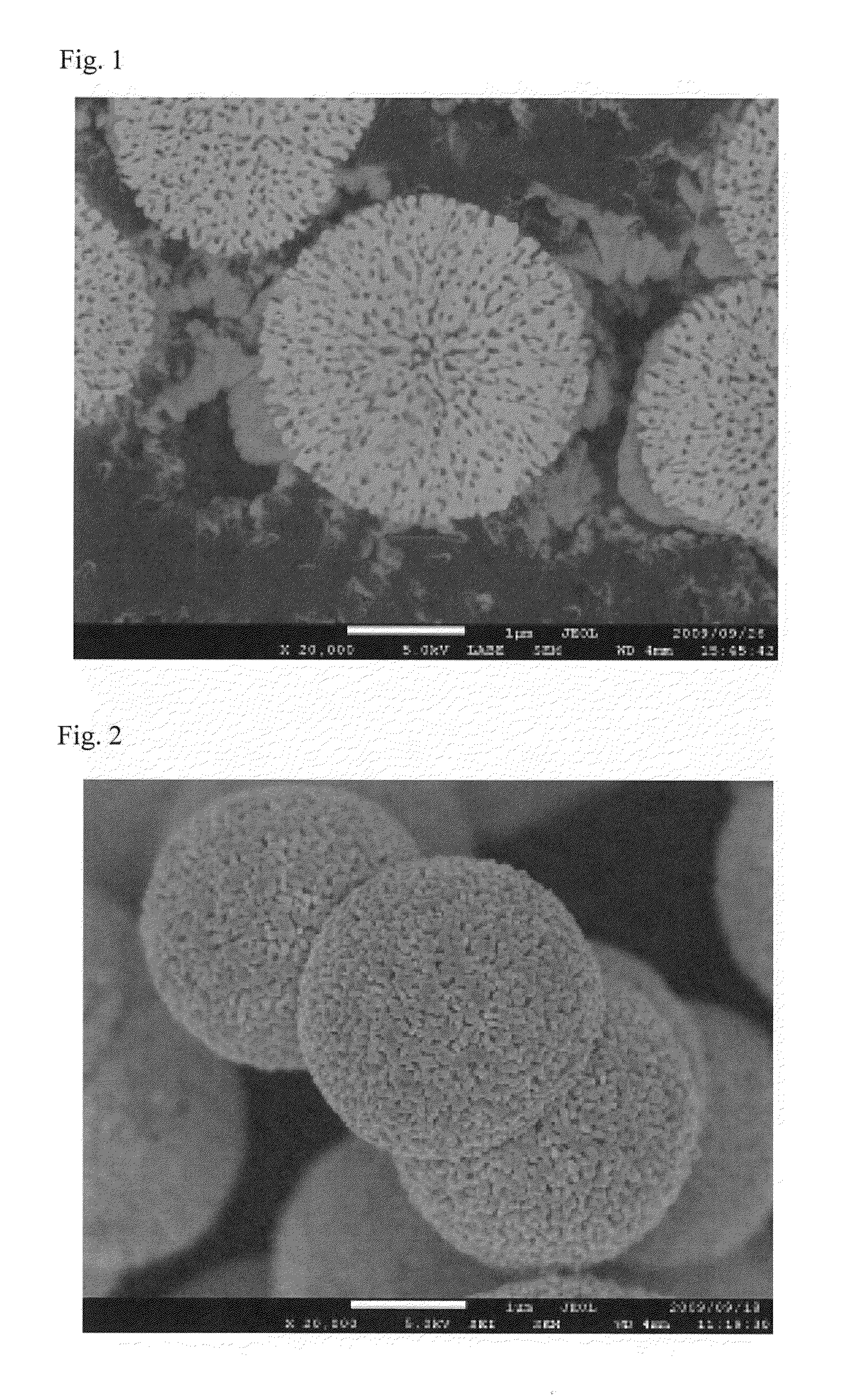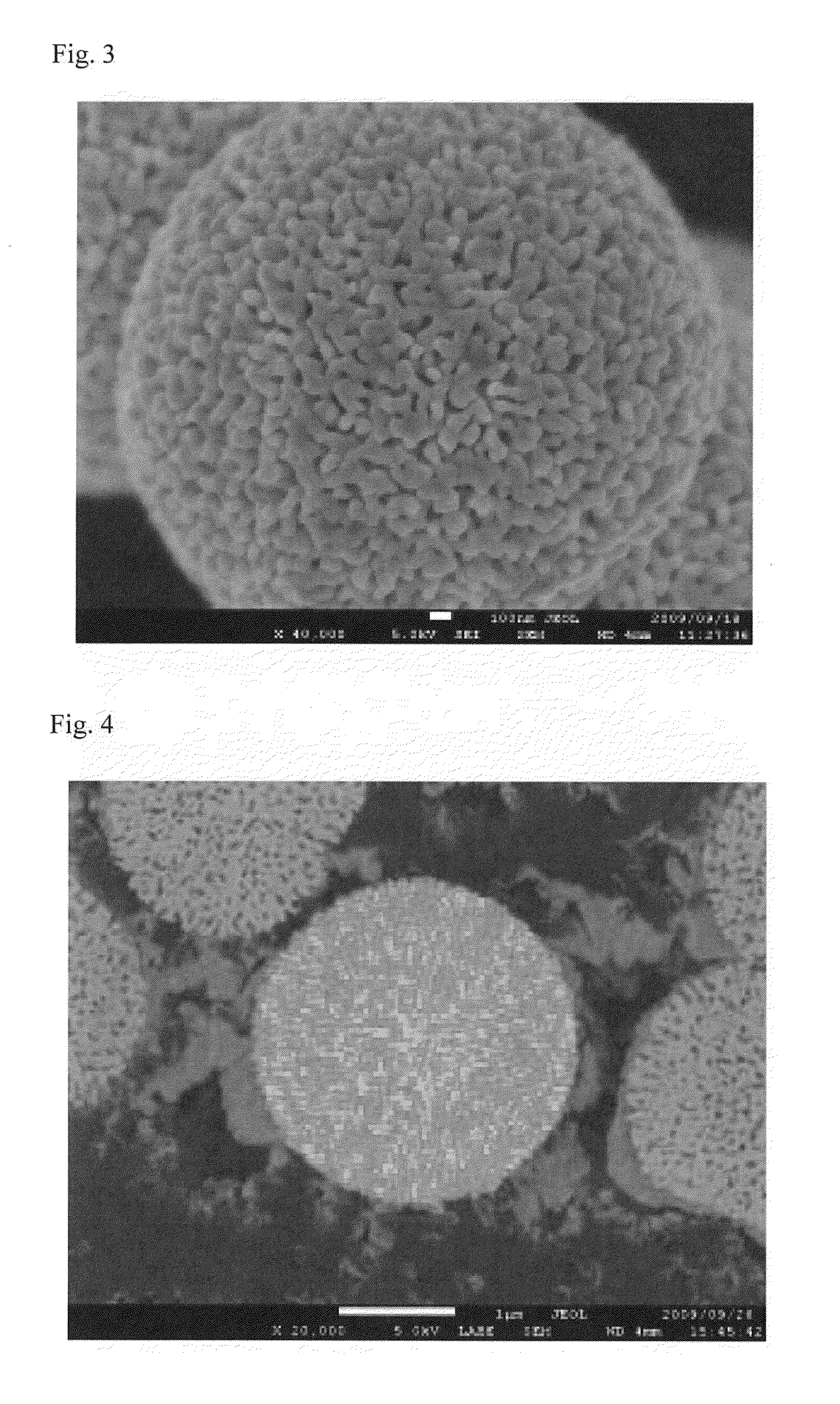Silver paste composition and method for producing the same
- Summary
- Abstract
- Description
- Claims
- Application Information
AI Technical Summary
Benefits of technology
Problems solved by technology
Method used
Image
Examples
examples
[0161]In the following, the present invention will be described in more detail using Examples. The present invention should not be construed as limited to these Examples.
[0162][Production of Silver Particles a]
[0163]Silver particles a, which are spherical and have continuous open pores, were produced as follows.
[0164](Step of Obtaining an Aqueous Solution Containing Silver Ions)
[0165]10 kg of an aqueous silver nitrate solution (concentration: 10 mol % / L), 4 kg of an aqueous citric acid solution (concentration: 10 mol % / L), and 20 kg of pure water at 25° C. were individually weighed, and then placed in a 50-liter (L) stainless steel tank. Then, the resultant mixture was stirred at room temperature (25±10° C.) using an agitator (manufactured by Shimazaki Mixing Engineering Co., Ltd.; trade name: JET type AJITER) for 30 minutes to prepare a mixture of silver nitrate and citric acid. Then, 17 kg of an aqueous ascorbic acid solution (aqueous L-ascorbic acid solution; concentration: 5 mol...
example a
Mixing (A) Silver Particles with a (B) Resin
[0198]100 Parts by mass of silver particles a for component (A) and 5 parts by mass of ethyl cellulose, which is a resin for component (B), were kneaded together by means of a three-roll mill to obtain a silver paste composition. The obtained silver paste composition was dried at 80° C. for 30 minutes to obtain a dried film. The silver paste composition was cured by heating at 300° C. for 1 hour, at 500° C. for 1 hour, or at 700° C. for 1 hour to obtain cured products. SEM photomicrographs of the obtained dried film and cured products at a magnification of 2,000 times are shown in FIG. 7.
example 1
[0201]100 Parts by mass of silver particles a for component (A) that are spherical and have continuous open pores, and 10 parts by mass of carboxyl group-terminal acrylonitrile-butadiene (HycarCTBN; hereinafter, also referred to as “CTBN”; manufactured by Ube Industries, Ltd.), which is a liquid thermoplastic elastomer having a glass transition temperature of 25° C. or lower and being in a liquid state or being dissolved in an organic solvent, for component (B), were mixed with each other to obtain silver particles having CTBN contained in the continuous open pores of the silver particles a. The amount of CTBN contained was 10% by mass, based on the total mass of silver particles a and CTBN (100% by mass). 110 Parts by mass of silver particles a containing component (A) and component (B) and having CTBN in an amount of 10% by mass contained in the continuous open pores, 90 parts by mass of an epoxy resin for component (B) (liquid bisphenol A epoxy resin; epoxy equivalent: 180 g / eq; ...
PUM
| Property | Measurement | Unit |
|---|---|---|
| Temperature | aaaaa | aaaaa |
| Temperature | aaaaa | aaaaa |
| Length | aaaaa | aaaaa |
Abstract
Description
Claims
Application Information
 Login to View More
Login to View More - R&D
- Intellectual Property
- Life Sciences
- Materials
- Tech Scout
- Unparalleled Data Quality
- Higher Quality Content
- 60% Fewer Hallucinations
Browse by: Latest US Patents, China's latest patents, Technical Efficacy Thesaurus, Application Domain, Technology Topic, Popular Technical Reports.
© 2025 PatSnap. All rights reserved.Legal|Privacy policy|Modern Slavery Act Transparency Statement|Sitemap|About US| Contact US: help@patsnap.com



